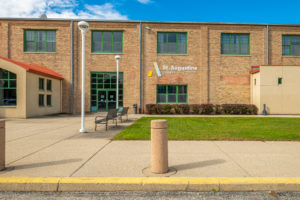Dual Language Education in the United States

10/25/2023
What is Bilingual Education?
As the words say, bilingual education is where you take courses that are in two languages at once, in both a student’s native and second language, with an even emphasis on both of them in order to not just teach the student about the subject but to help the student know in both languages at the same time. Of course, the level of intensity depends on program to program, and student to student, with some students having more of a tenuous grasp on their second language than others. Bilingual colleges such as SAC utilize this bilingual model for students whose primary language is Spanish.
What is the Purpose of Bilingual Education?
While bilingual education’s purpose varies from place to place, the core purpose of bilingual education is to help students develop competency in two languages rather than one, allowing them to be able to have more opportunities after they are finished with their academic studies. The best bilingual education programs are those that push their students to learn a new language. There are two different types of bilingual programs, each one with their own goals in mind:
Transitional Bilingual Education: The purpose of this transitional education program is to start off the program with the student’s home language, helping them to adjust slowly and accordingly until they are at the point where their primary language used in school is the secondary language. The benefit of bilingual education with a focus on transitional goals is to help the student gain fluency in this second language, especially where it pertains to their academic focus of study.
Maintenance Bilingual Education: This form of bilingual education is a little more gradual, and while this program will still use English as a second language to be used in the classroom, the urgency for students to use English in and outside of the school is not as demanding as one finds in a transitional bilingual education.
How Does St. Augustine College Use a Bilingual Education to Empower its Students?
For Hispanic students, the bilingual education at St. Augustine College with its bilingual classroom resources is an important step towards becoming assimilated into a long-lasting career and success in America.
The model allows students to start in Spanish by taking content courses (such as History of the United States, Hispanic American Literature, Introduction to Early Childhood Education, and General Psychology) in Spanish along with ESL classes, for which they also receive academic credit. As the student progresses in the ESL sequence, they transition to bilingual English-Spanish content classes, and then to classes in English. The transition occurs seamlessly, and it takes up to three semesters depending on the level at which the student performed in the English placement test, which is required for admission
What Makes St. Augustine College’s Bilingual Education Program Stand Out?
The model ensures that students progress in their chosen careers while improving their English skills, and it’s effectively reinforced by tutoring (including writing center support), and intensive academic advising and coaching. The main difference with other institutions of higher education that also attract large groups of Hispanic students is that those institutions most often require students to complete their ESL courses prior to registering for content classes, which increases the overall length of the career and may result in increased attrition.
The bilingual education resources you can find at SAC are some of the most impressive in the greater Chicago area, offering both academic and financial support to those who need it. Saint Augustine College’s courses work around your life, and not the other way around, giving you the opportunity to excel in an on-demand field, such as Respiratory Therapy or Early Childhood Education. Are you curious about where you can master the English language and get a degree at the same time? Learn more about why St. Augustine has a 2x higher associate degree program graduation rate than comparable institutions in Chicago.
10/25/2023




